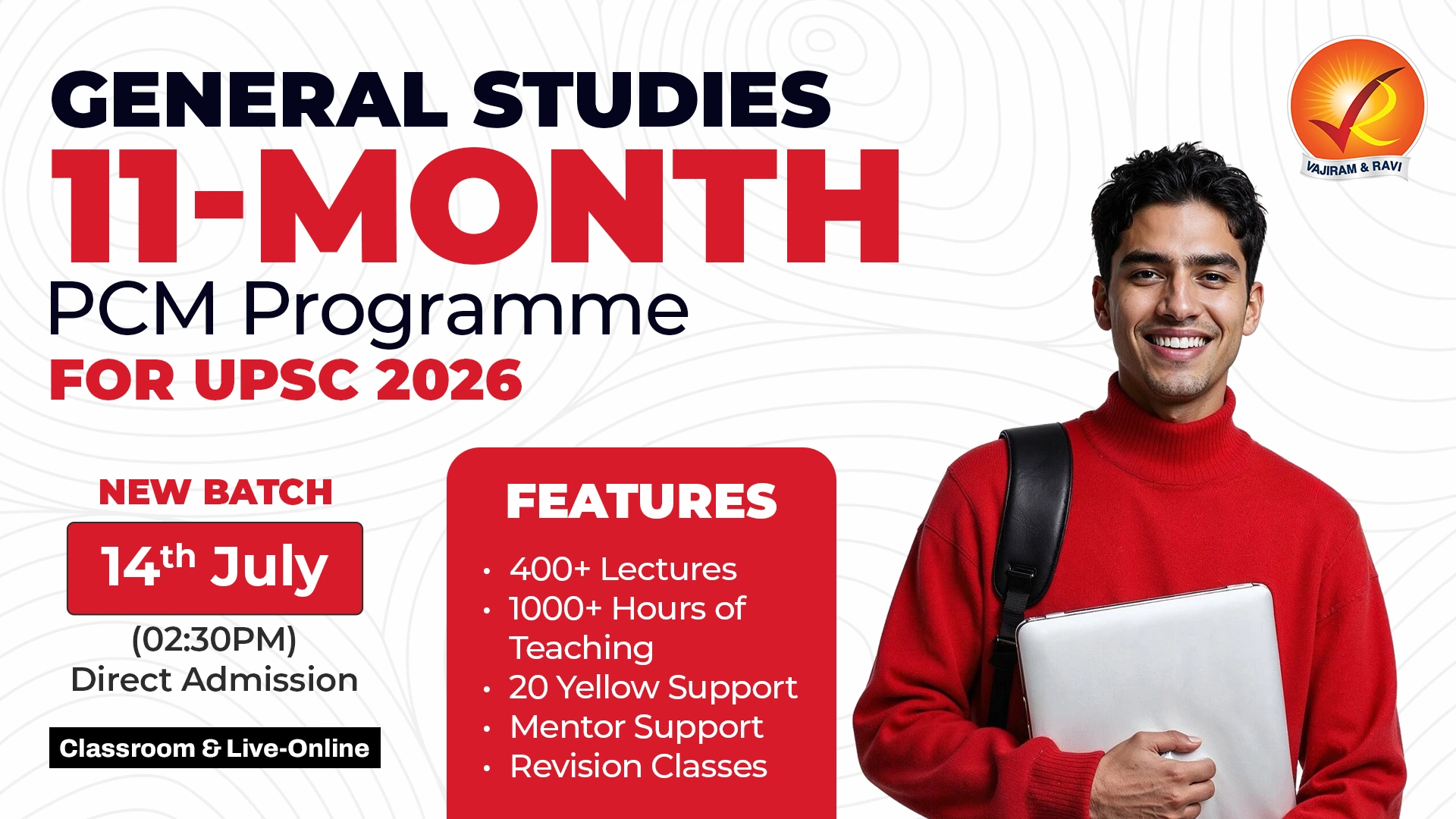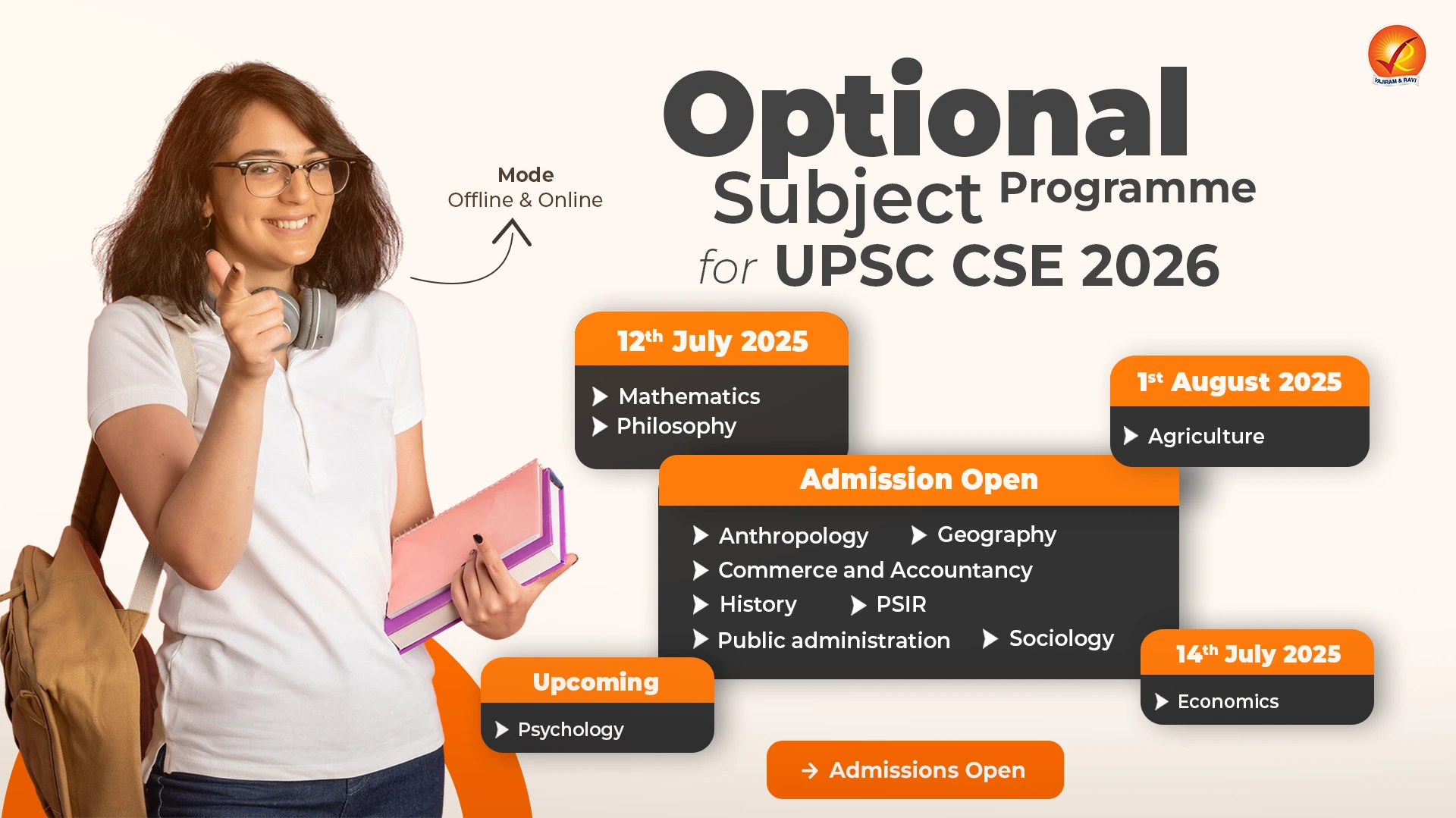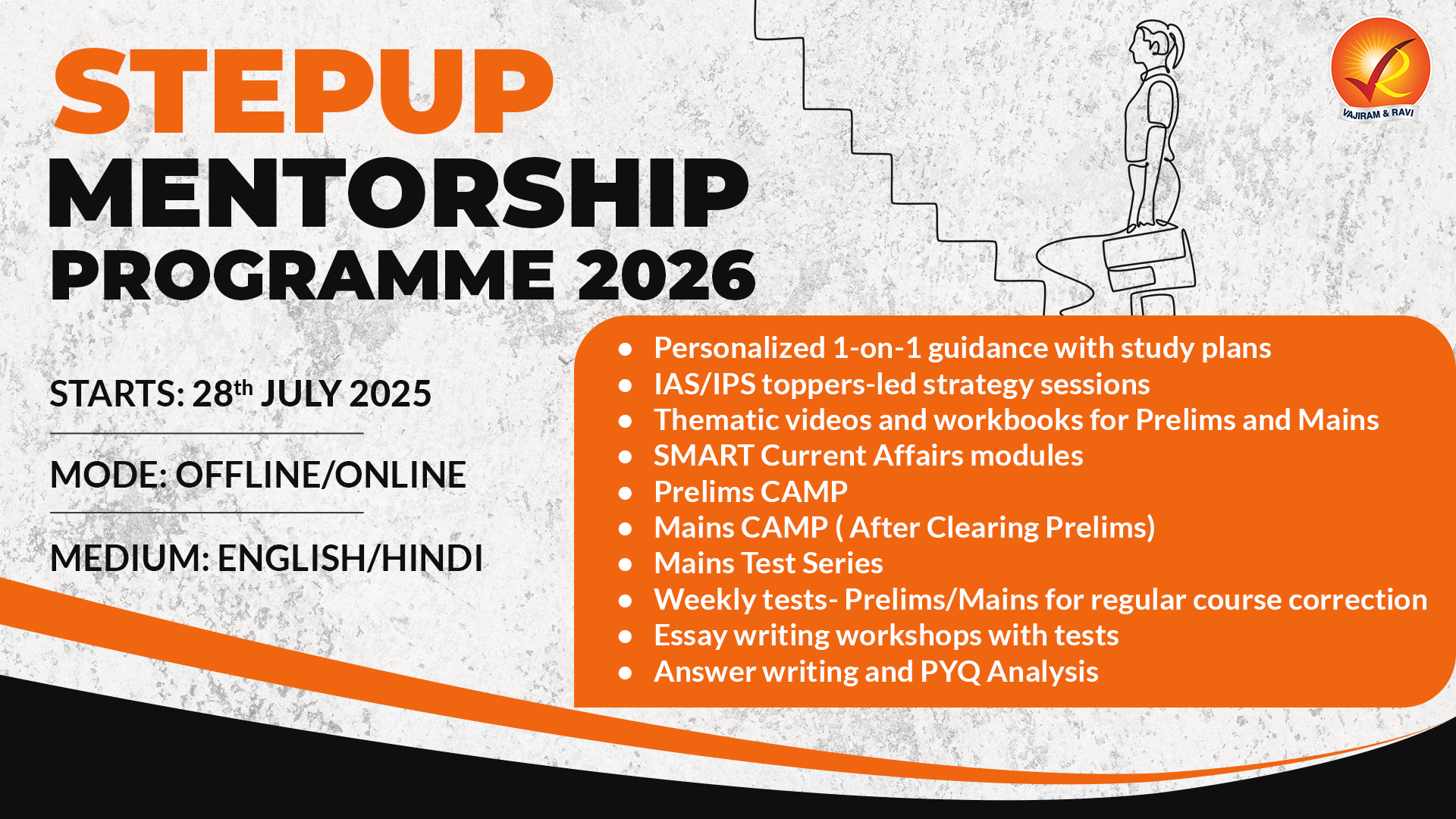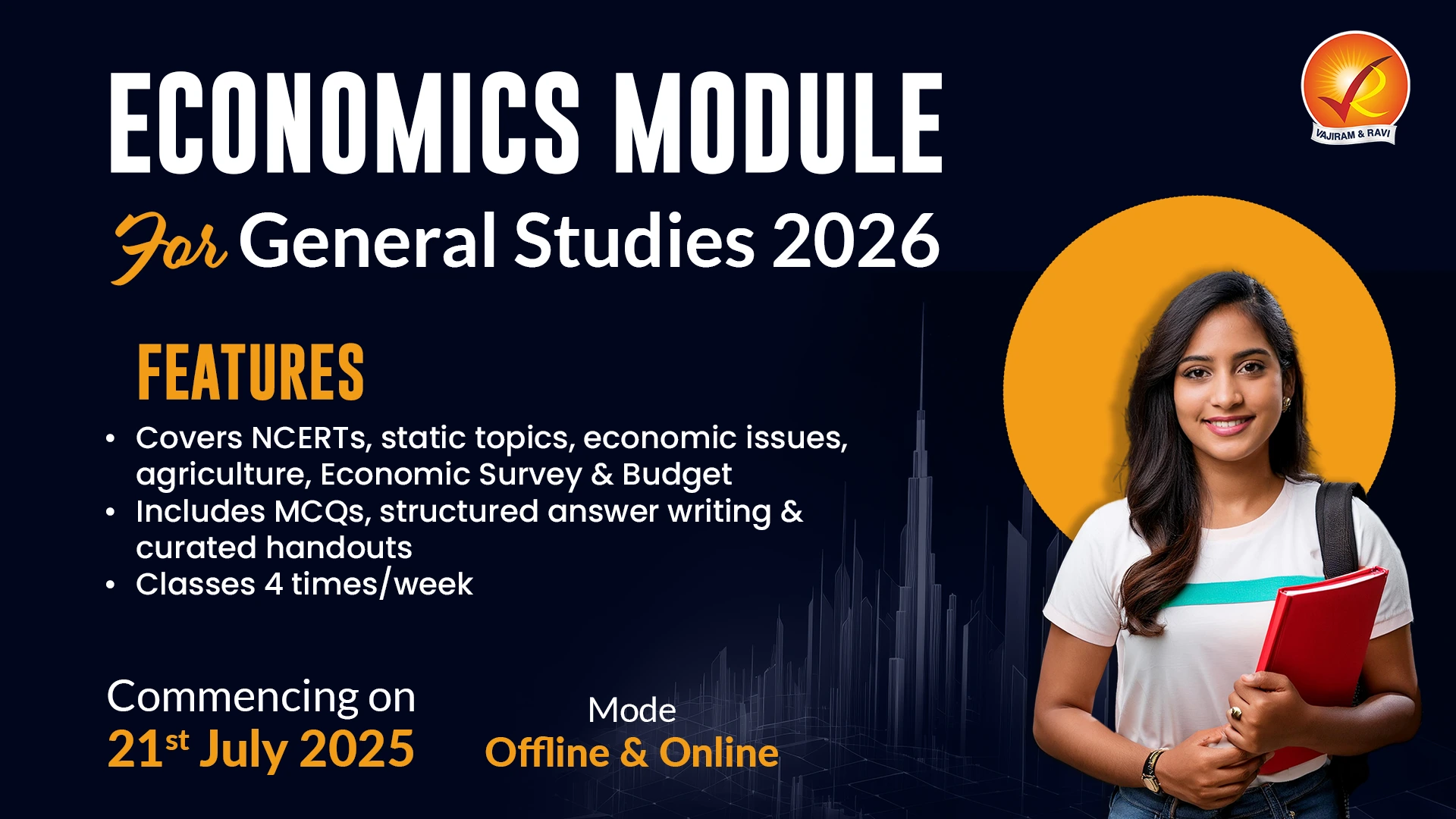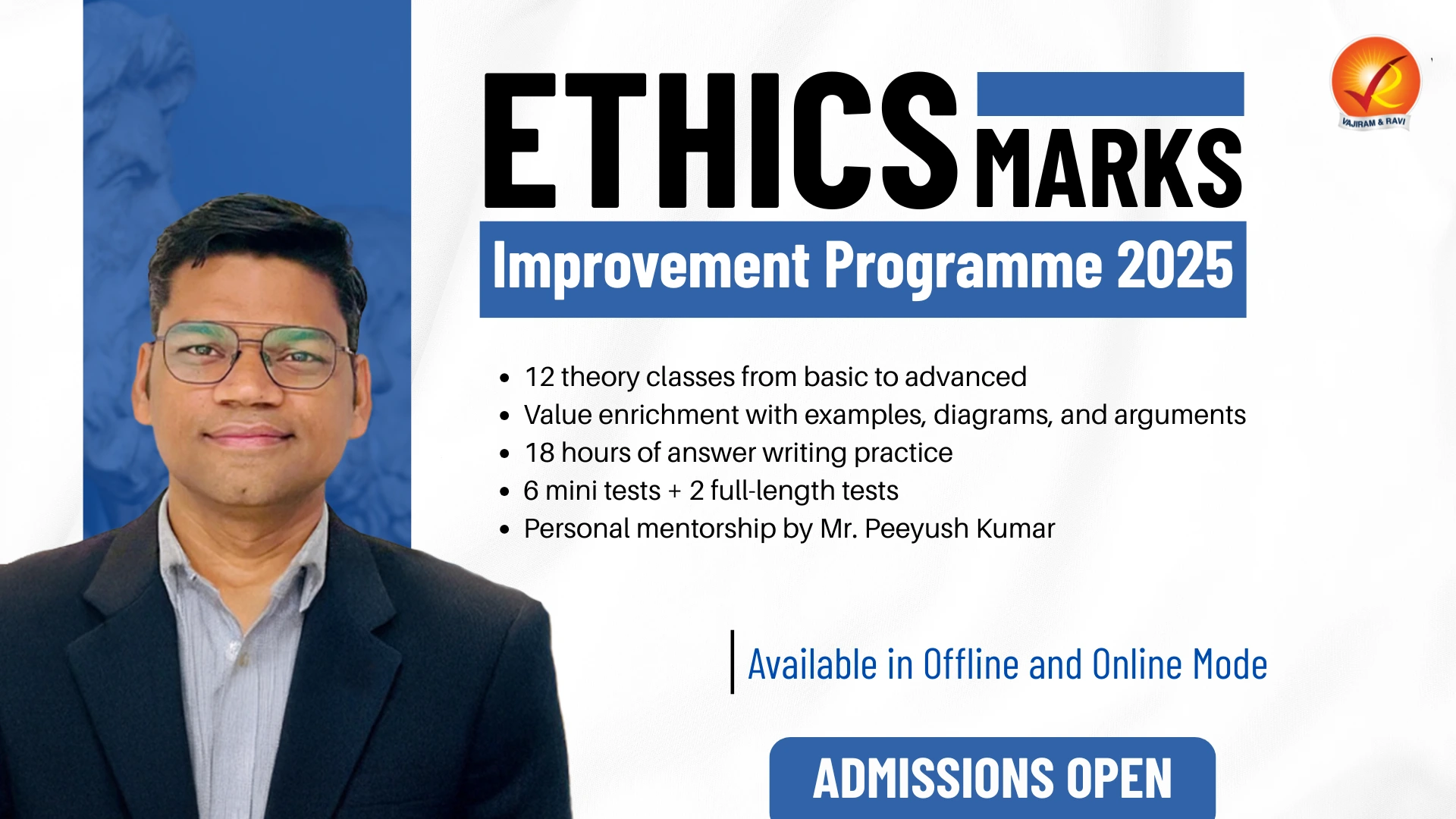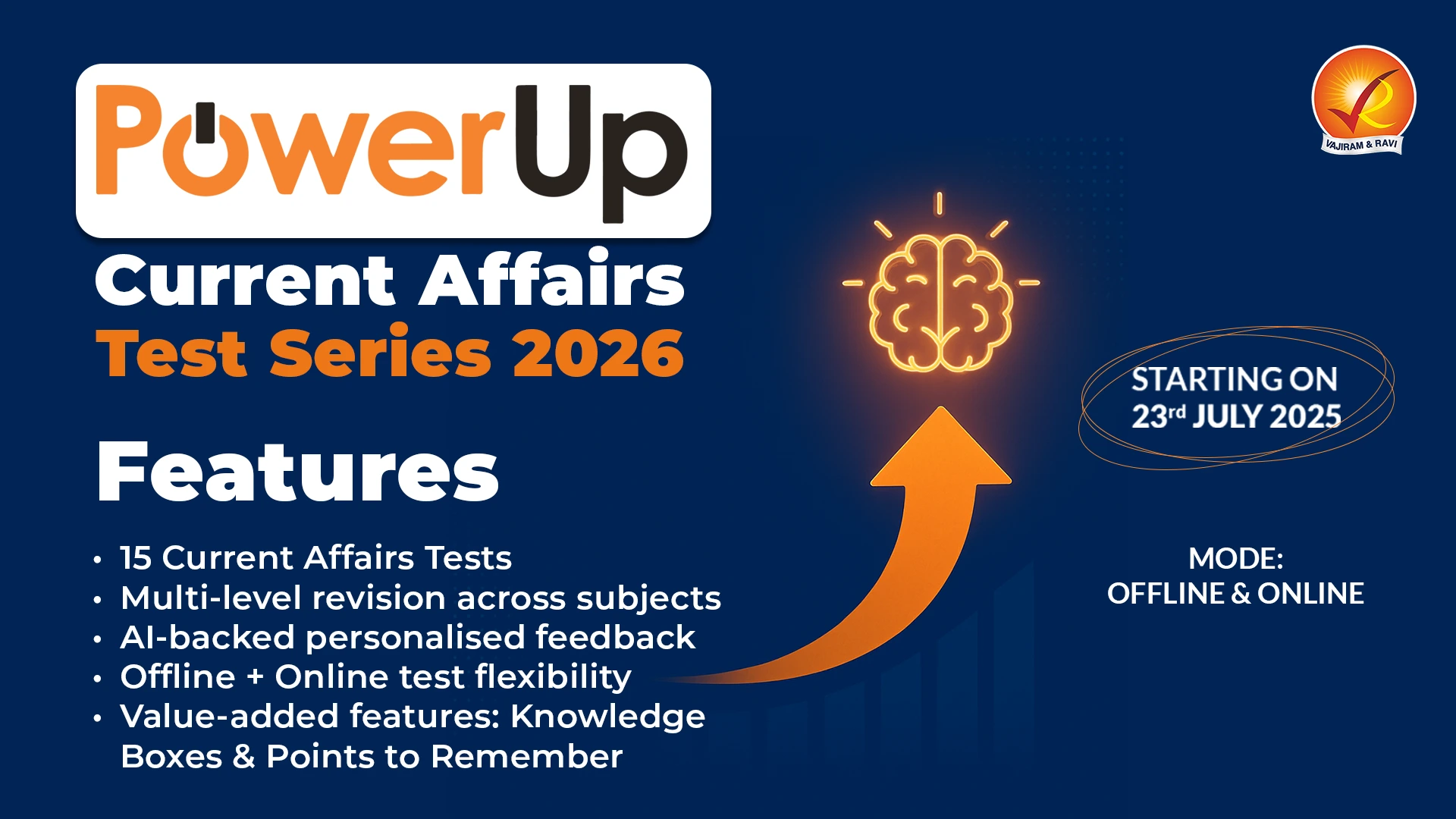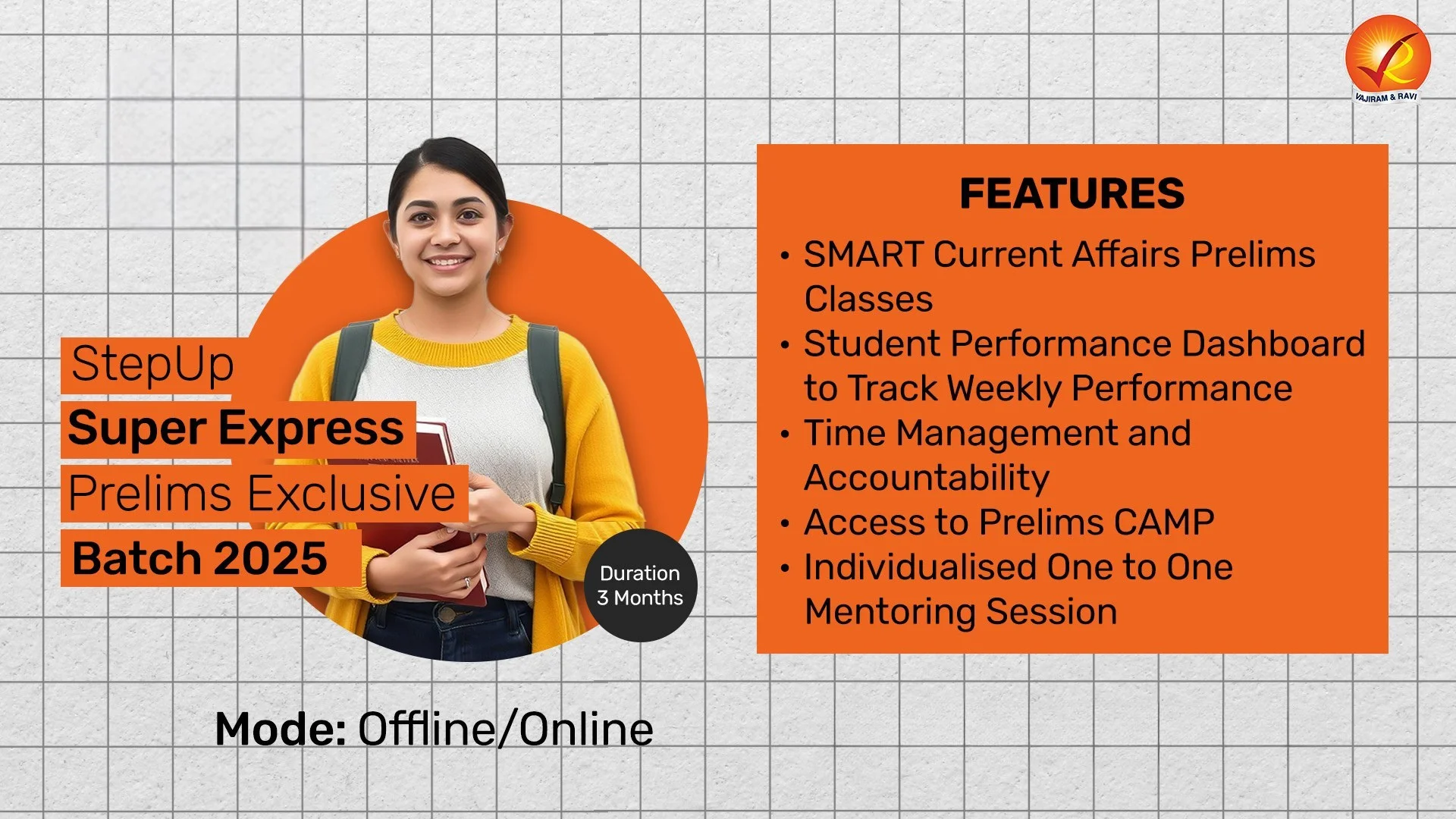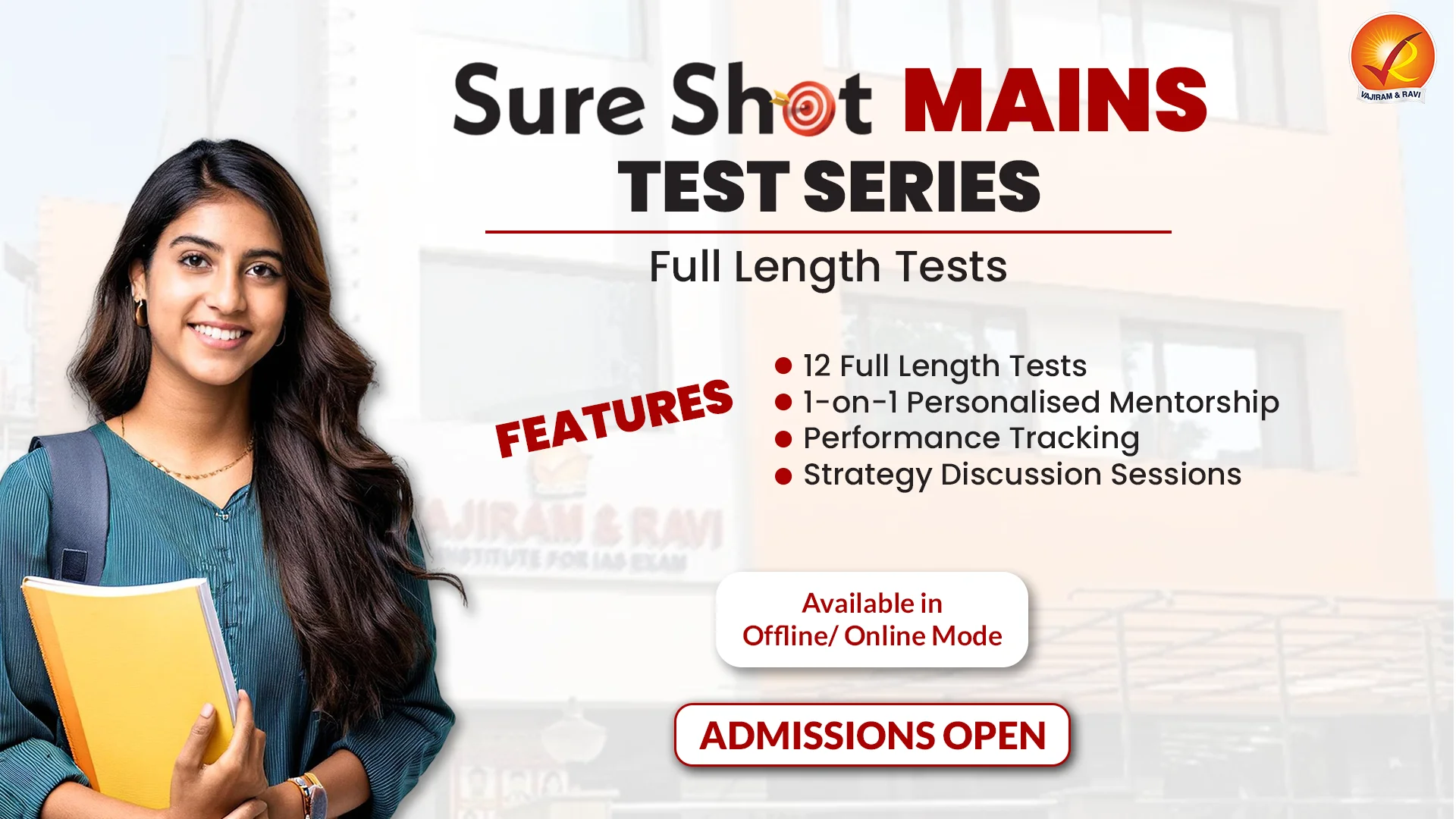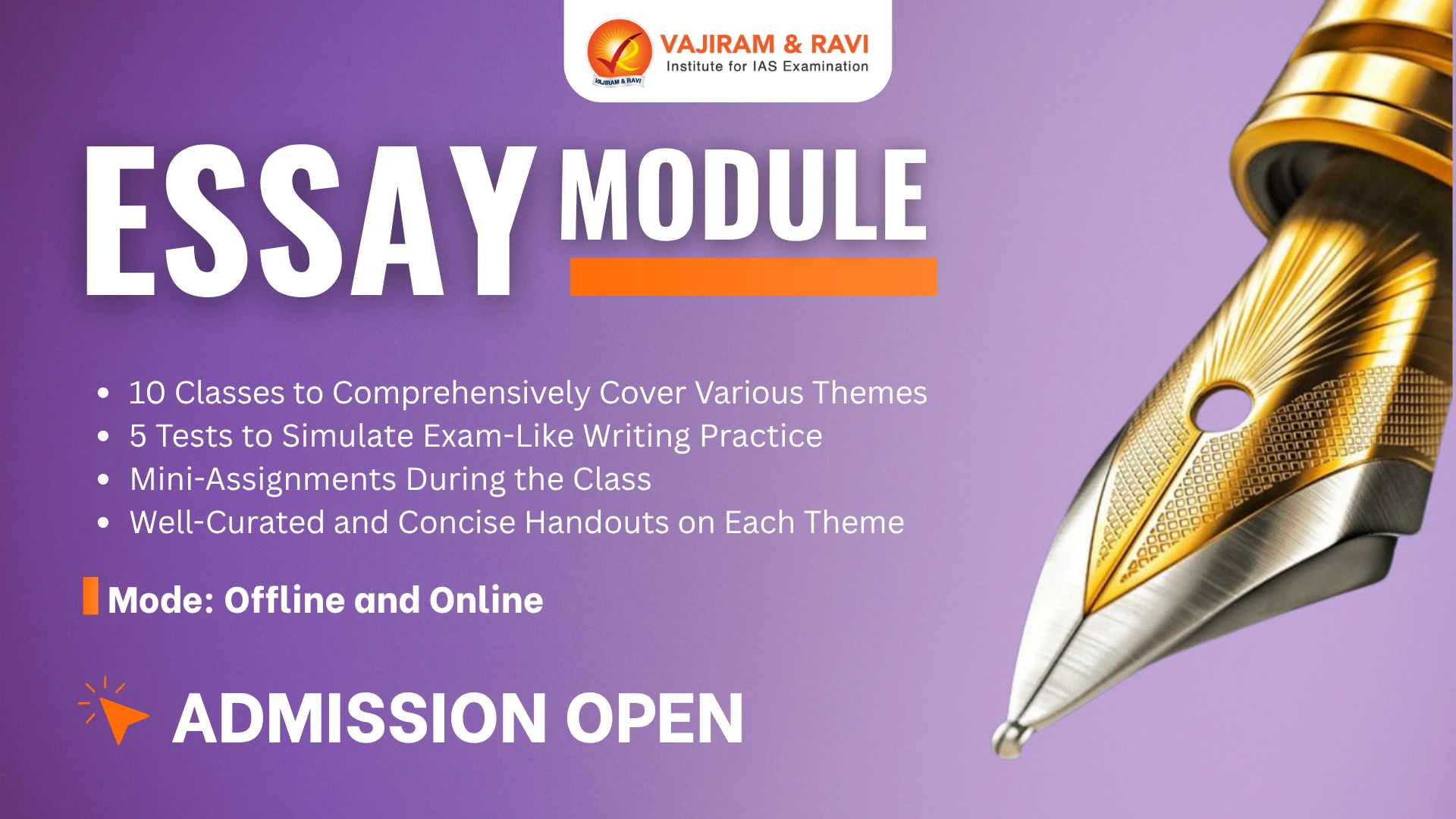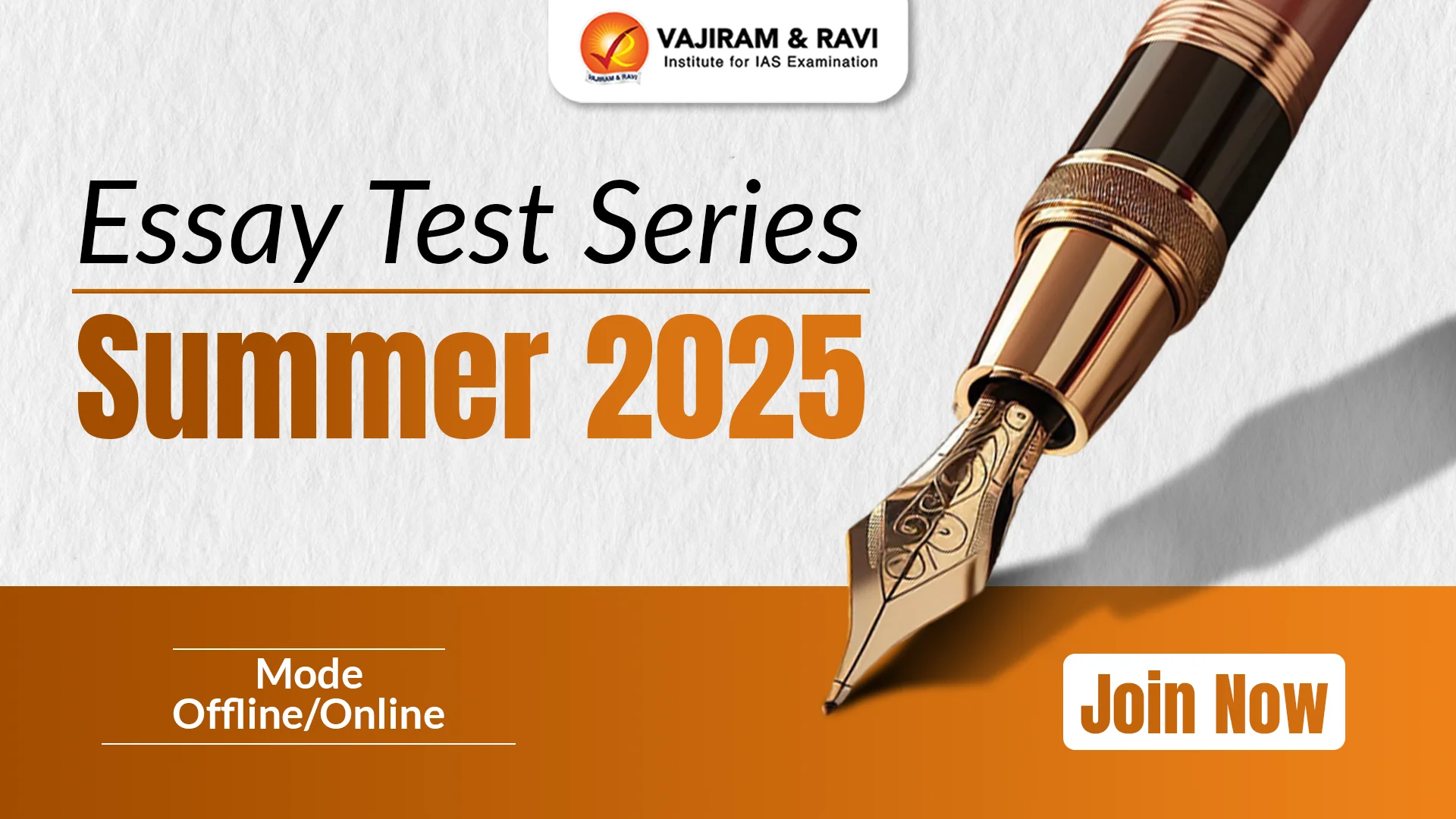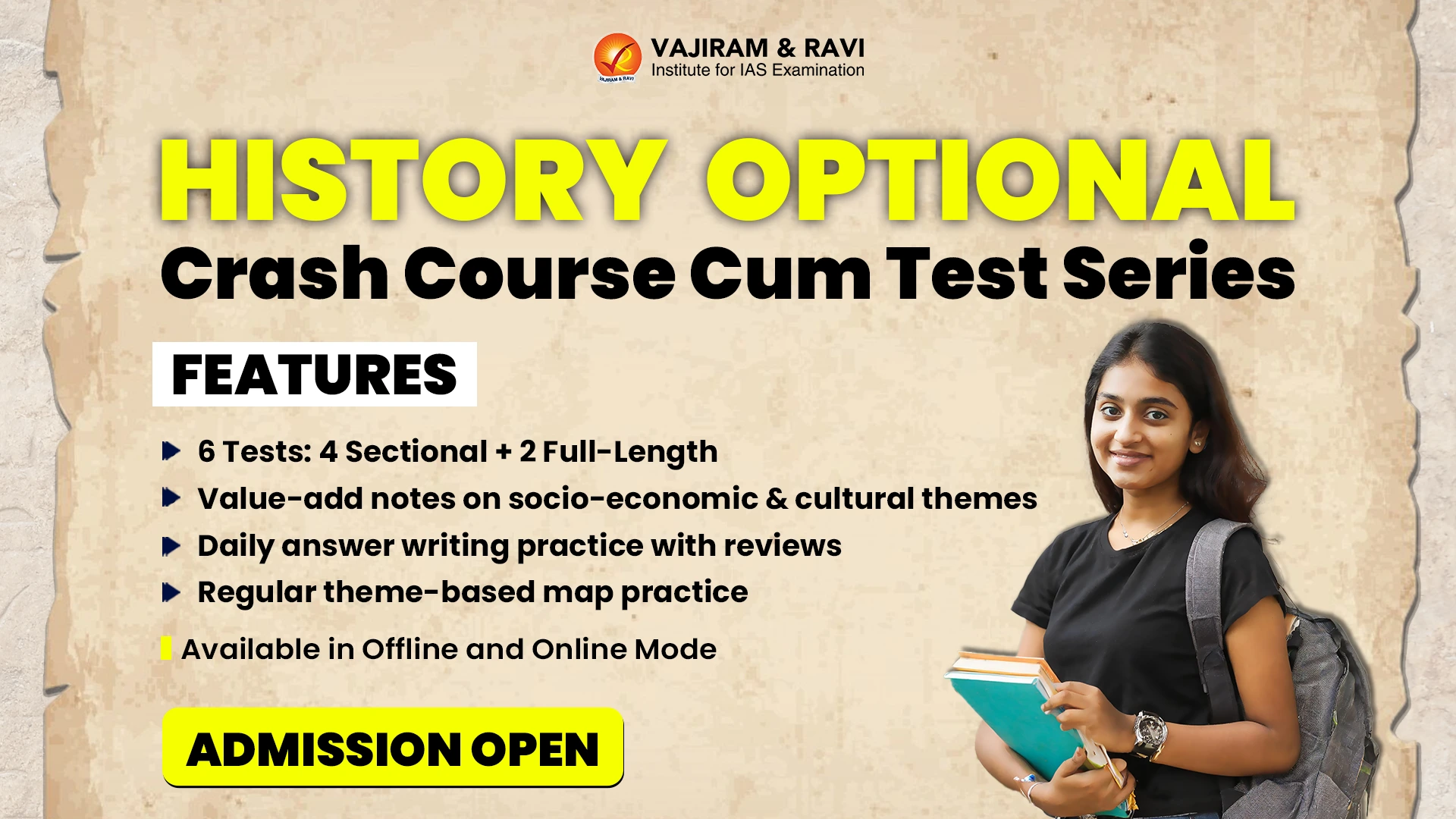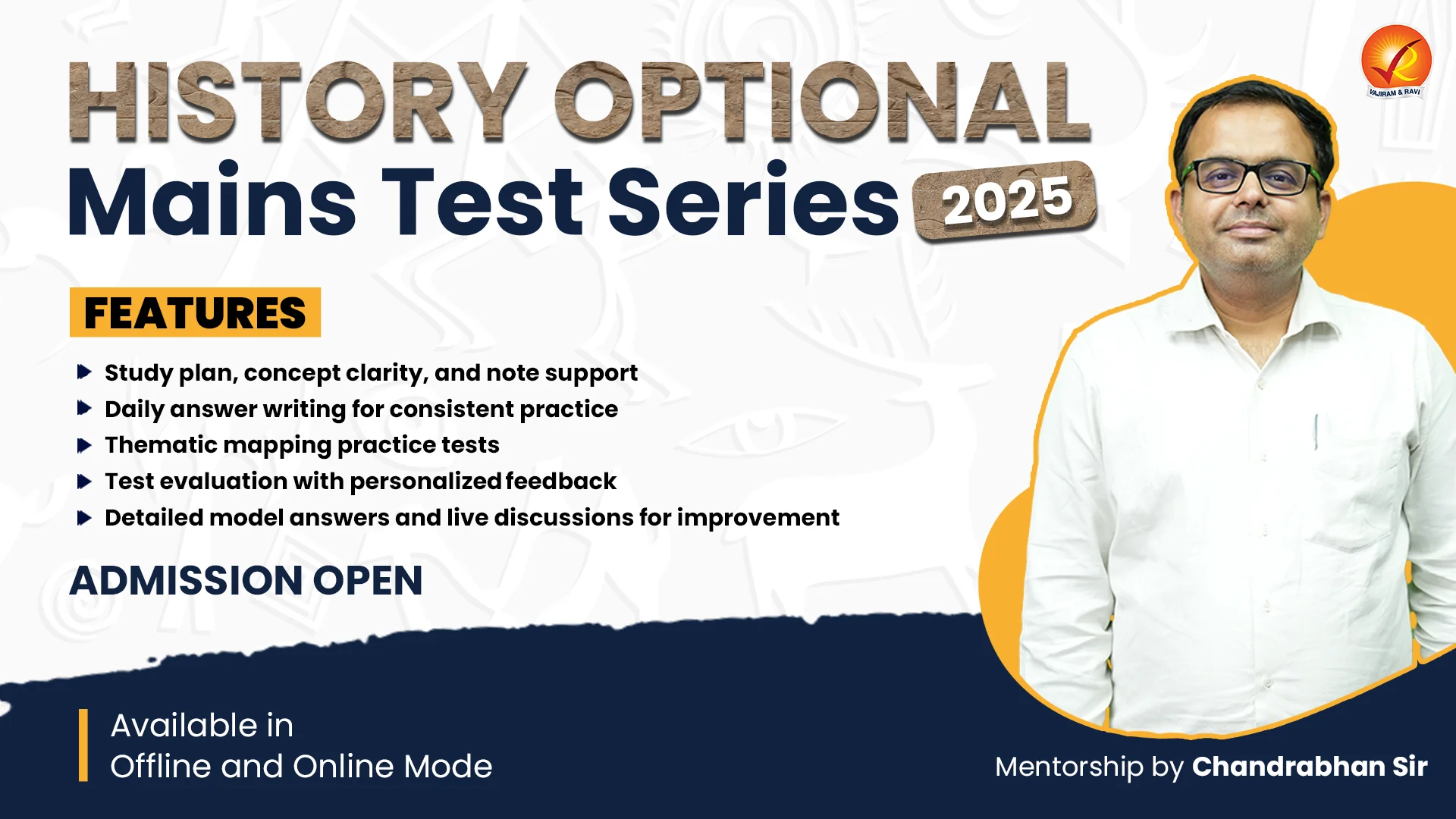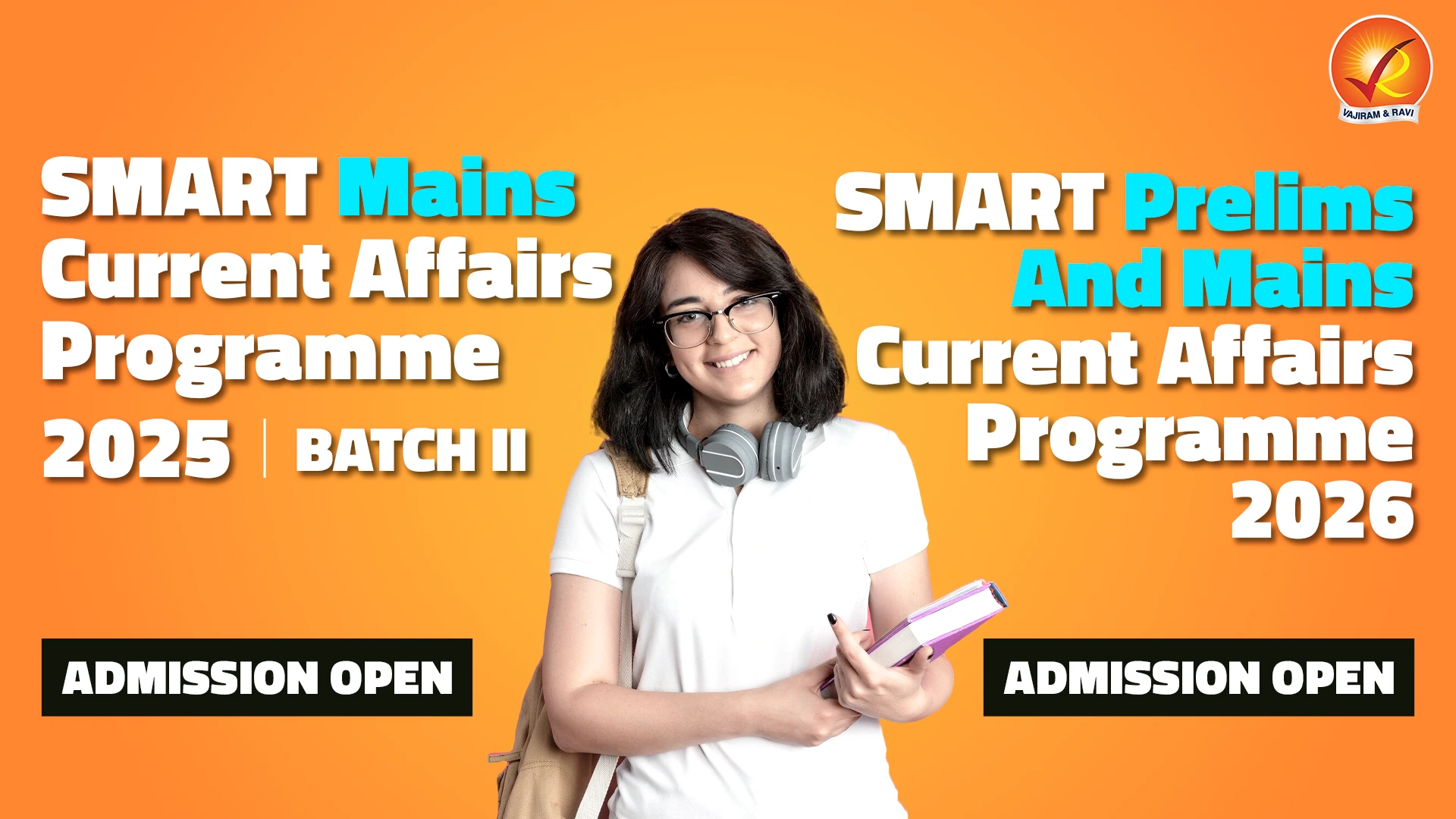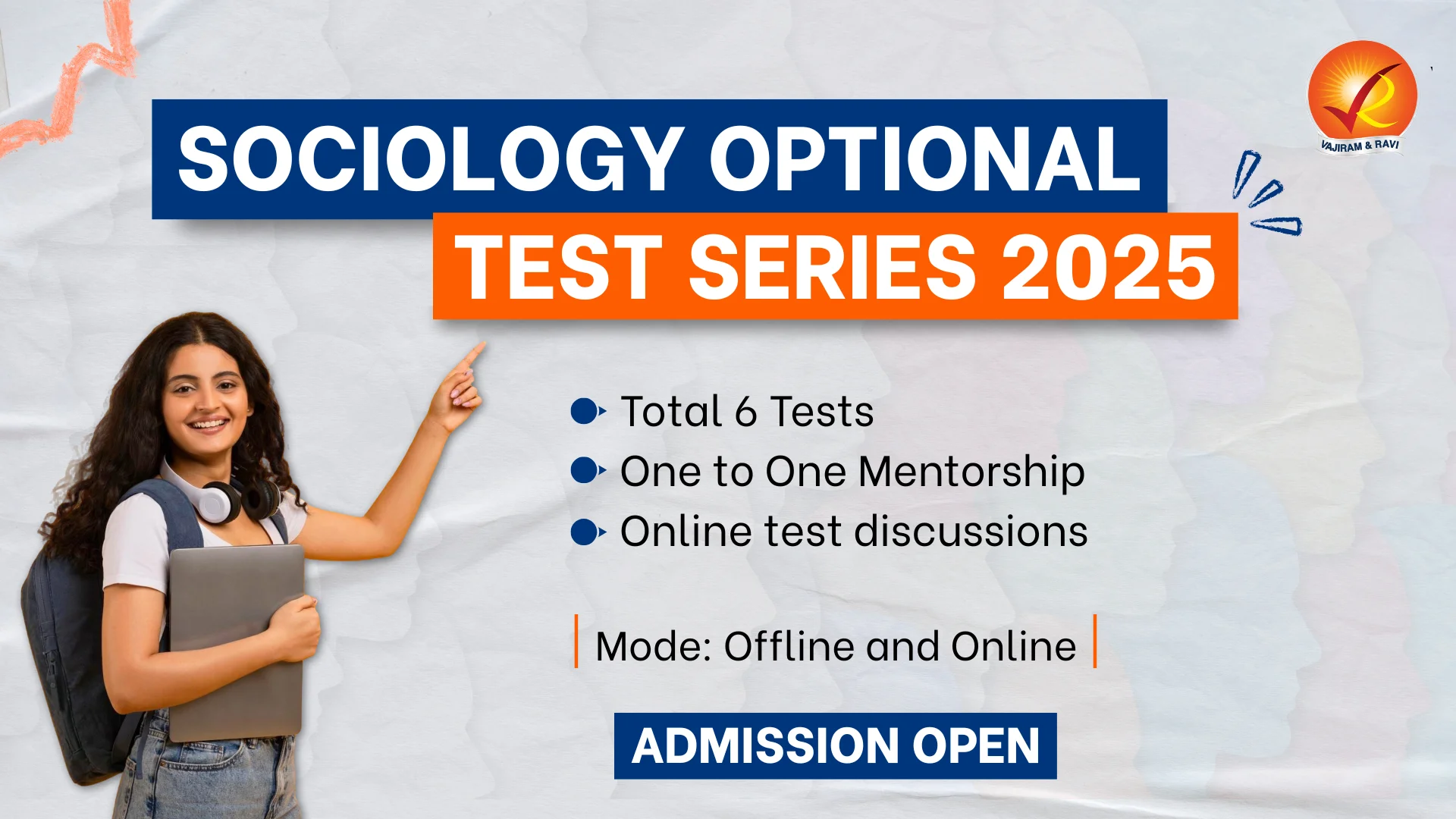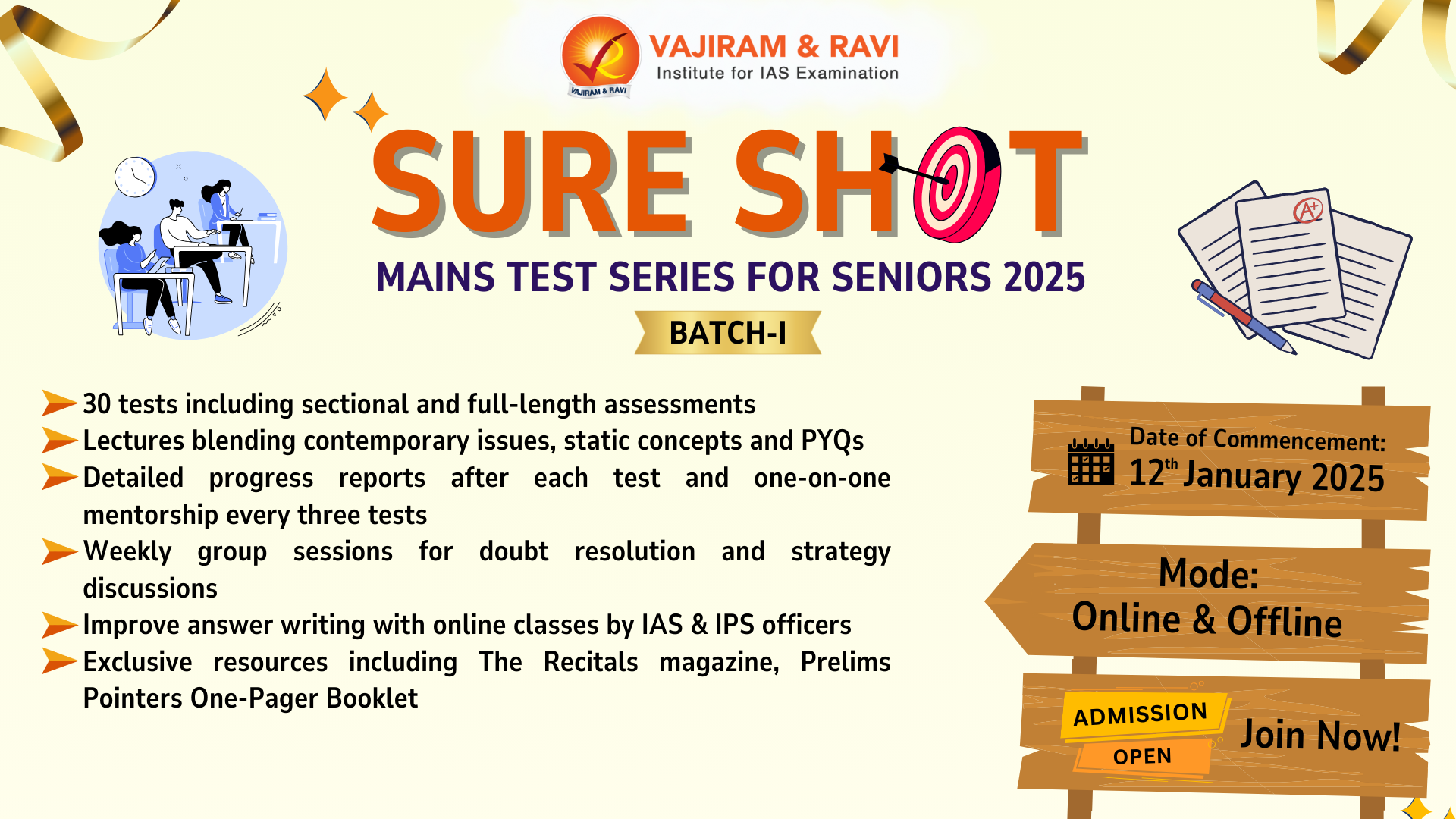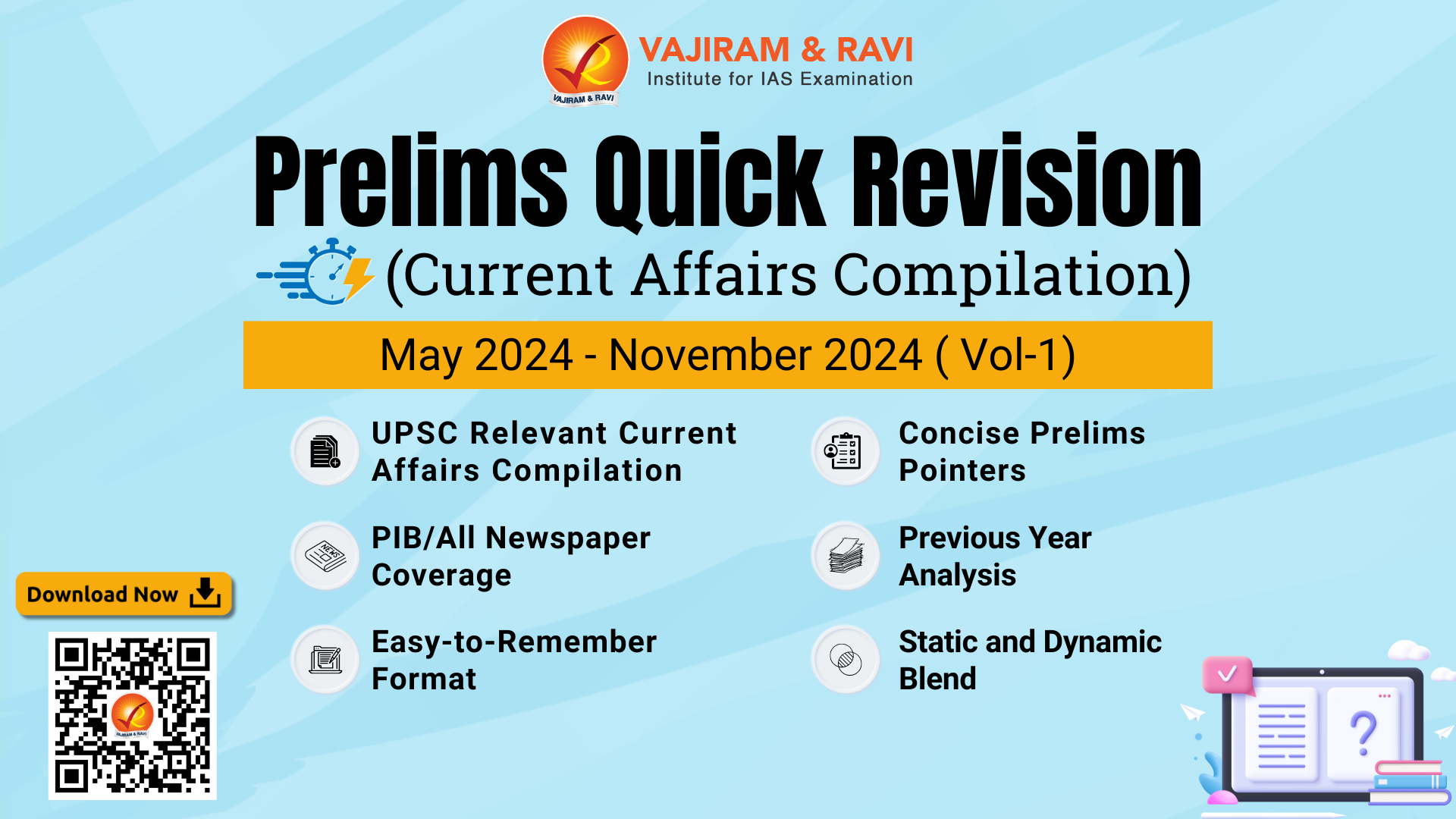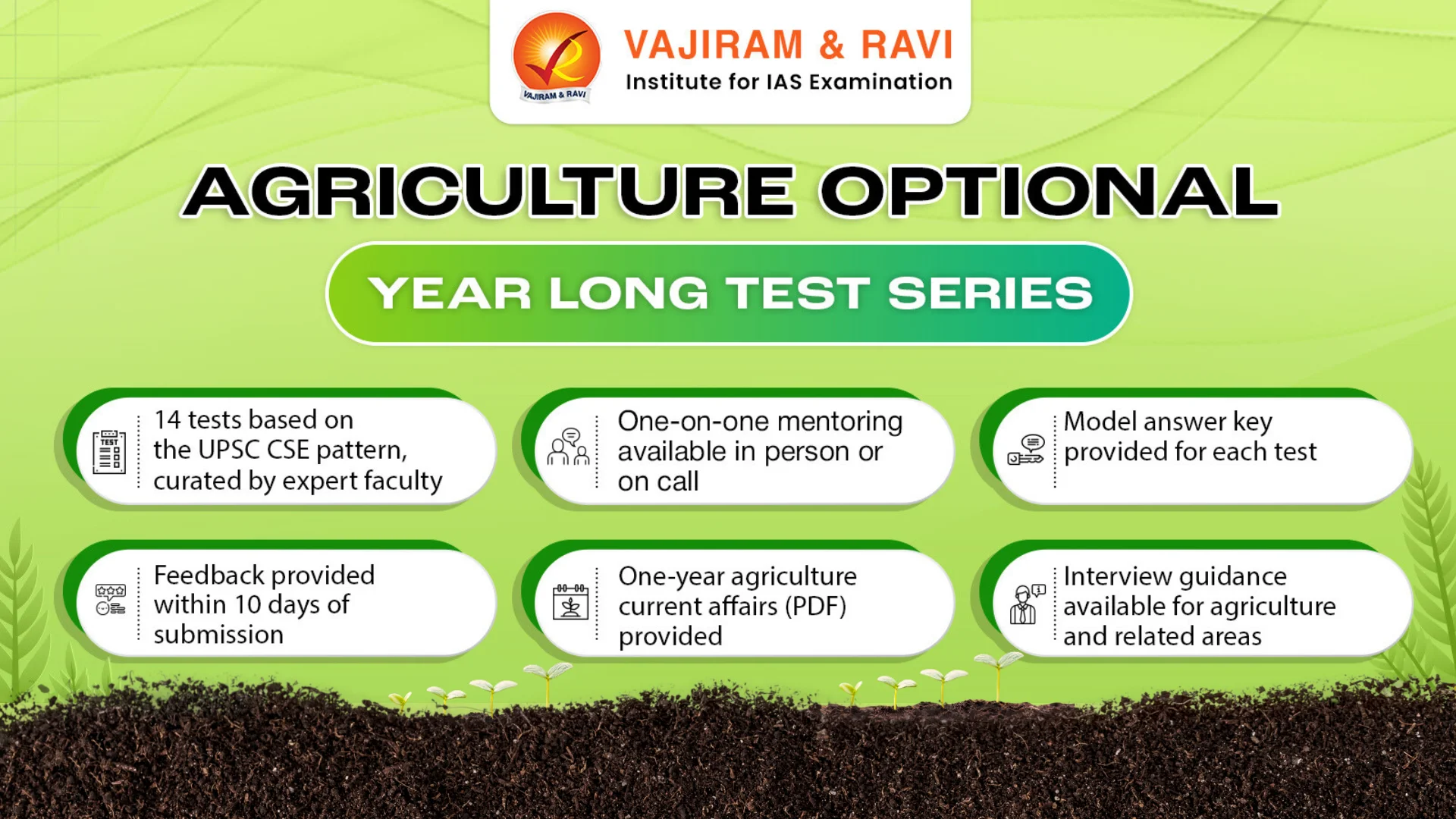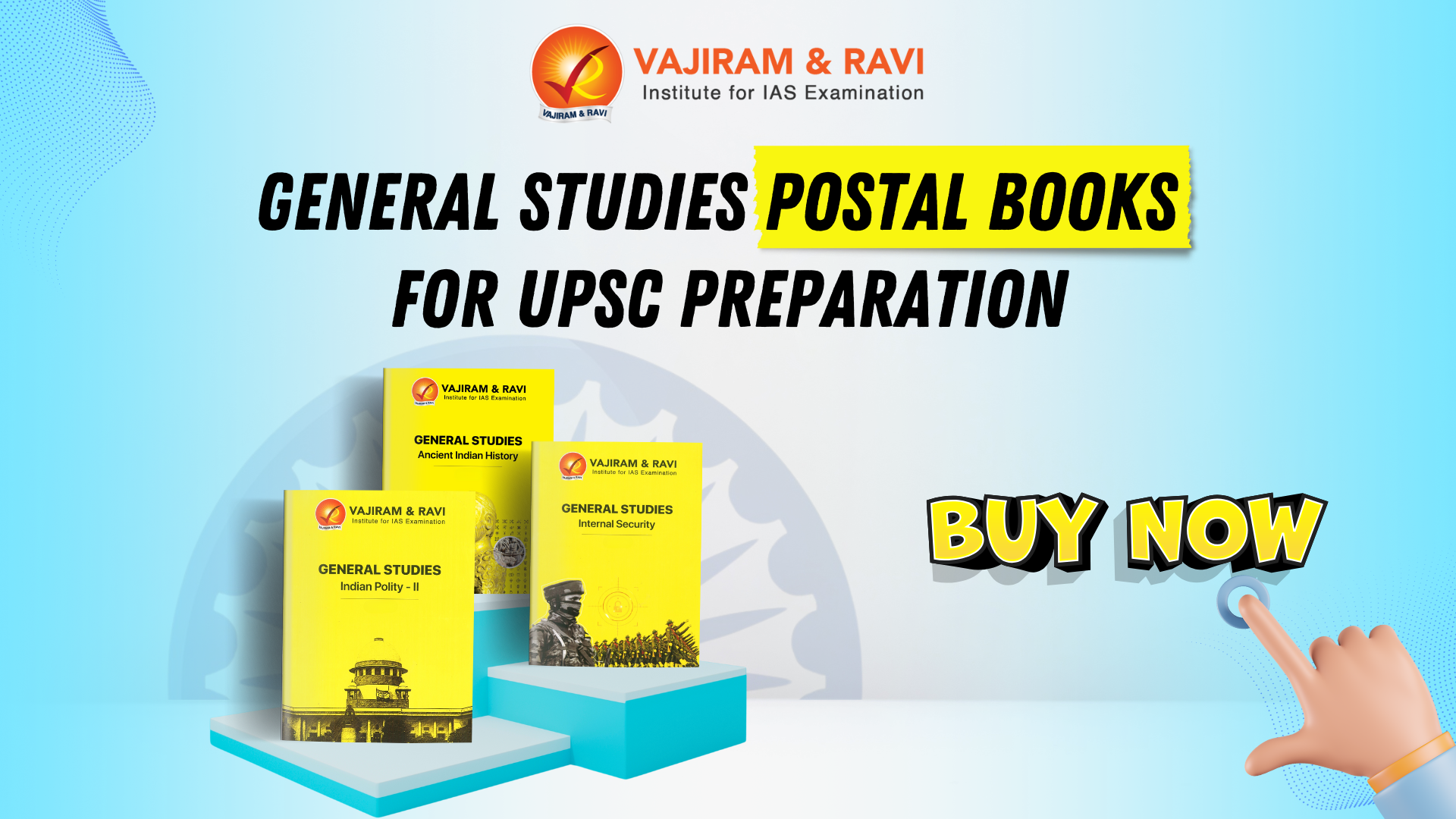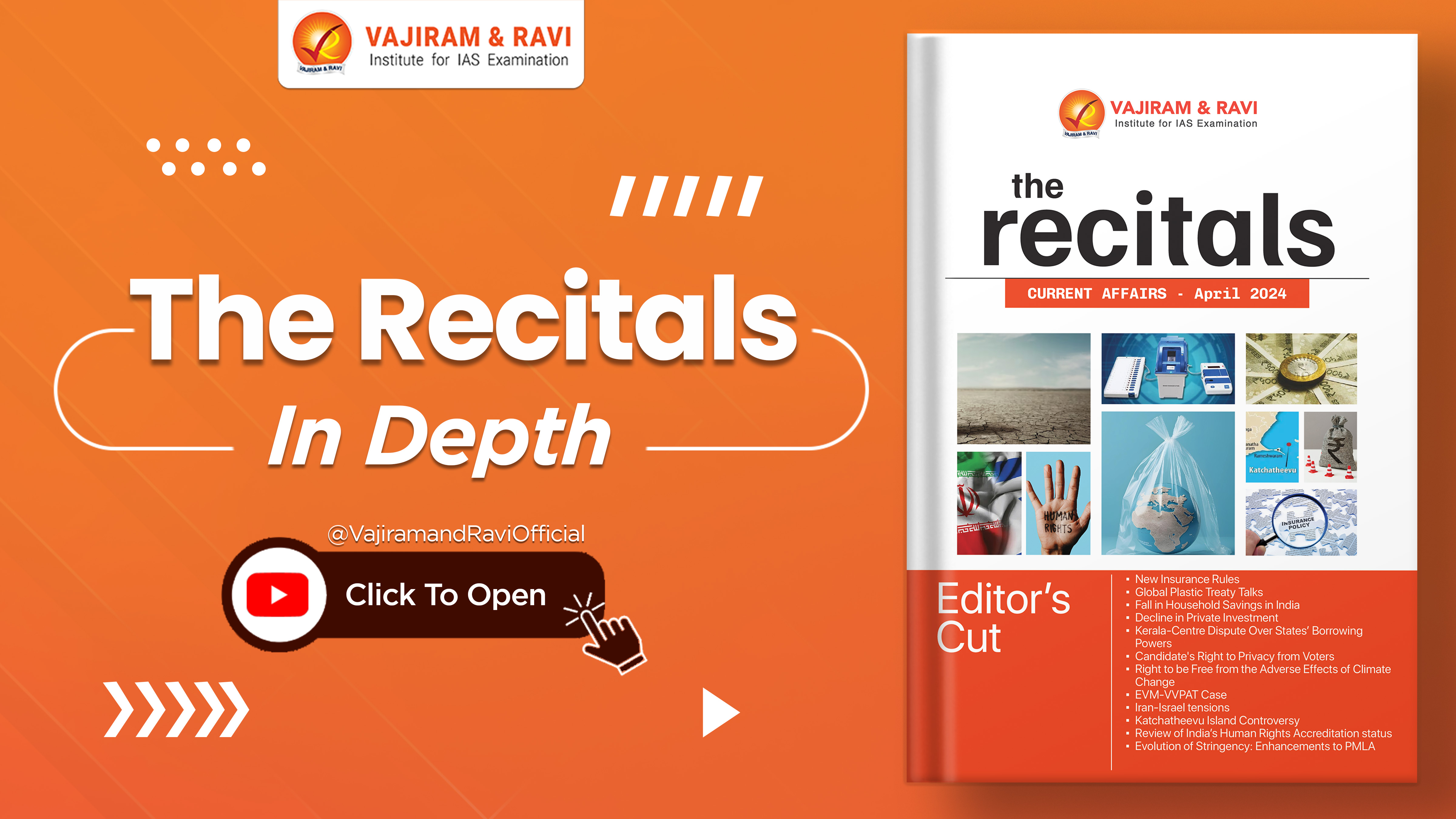Upcoming Mentoring Sessions
RMS - Economy 11 - Infrastructure
RMS - Art & Culture 3
RMS - Polity 7 - Parliament 3
RMS - Geography - Indian Physiography - 2
RMS - Economy 10 - Agriculture
RMS - Polity 7 - Parliament 2
RMS - Geography - Indian Physiography
RMS - Polity 7 - Parliament 1
RMS -Economy 9 - Fundamentals of Indian Economy
RMS - Geography 5 - Major Landforms
RMS - Art & Culture 2
RMS - Geography 4 - Volcanoes, Volcanic Landforms and Rocks
RMS - Polity 6 - Judiciary 2
RMS - Economy 8 - Trade and Important Government Schemes
RMS - Geography 3 - Evolution of Oceans and Continents
RMS - Economy 7 - Inflation
RMS - Polity 6 - Judiciary 1
RMS - Geography 2 - Basic Concepts of Universe & Earth Interior
RMS - Art & Culture 1
RMS - Economy 6 - Balance of Payment
RMS - Geography 1 - Geomorphic Processes
RMS - Polity 5 - Constitutional & Non-Constitutional Bodies
Mentoring Session - UPSC Form Filling
RMS - Economy 5 - Financial Markets
RMS - Polity 4 - Fundamental Rights - P3
RMS - Economy 4 - Fiscal Policy and Budgeting
RMS - History 2 - From 1765 to 1858 - P2
RMS - Polity 4 - Fundamental Rights - P2
RMS - Economy 3 - Taxation
RMS - Polity 4 - Fundamental Rights-P1
RMS - History 1 - European Penetration to Battle of Buxar
RMS - Economy 2 - Money & Banking - P2
Mentoring Session (2024 - 25) - How to Write an ESSAY?
Social Issues Doubts and Mentoring Session
Ethics & Essay Doubts and Mentoring Session
Geography & Environment Doubts and Mentoring Session
History Doubts and Mentoring Session
Economy & Agriculture Doubts and Mentoring Session
Online Orientation Session
How to Read Newspaper and Make Notes?
Mains Support Programme 2025-(2)
Mains Support Programme 2025- (1)
Polity & International Relations Doubts and Mentoring Session
Mentoring Sessions (2024-25) - How to DO REVISION?
RMS - Polity - Parliament 3
Mentoring Sessions (2025-26) - How to Start Preparation?
RMS - Geography - World Mapping
RMS - Polity - Parliament 2
Prelims 2024 Strategy Session
RMS - Polity 3 - Union & its Territories and Citizenship
RMS - Geography - Major Landforms
RMS - Polity 2 - Preamble
RMS - Economy 2 - Money & Banking - P1
Mentoring Session (2024-25) - How to Make Notes?
RMS - Polity 1 - Constitution & its Salient Features
General Mentoring Session (GMS )
RMS - Modern History - Constitutional Developments - Important Acts in British India
Mentoring Session (2025-26) - How to write an Answer?
RMS - Economy 1 - Fundamentals of Economy and NIA
Article
12 Jul 2025
Context
- India stands at a crossroads in its development journey, a global economic power, a digital innovator, and the world’s youngest nation by population, yet, beneath these commendable achievements lies a troubling paradox.
- The World Economic Forum’s Global Gender Gap Report (2025) places India at 131 out of 148 countries, revealing an unsettling truth: gender inequality remains a deep-seated and structural impediment to the nation’s progress.
- Therefore, it is important to analyse the multidimensional nature of India’s gender gap, particularly in economic participation and health.
Reasons Behind India’s Gender Gap
- Structural Failures
- India’s poor ranking is most alarming in the domains of economic participation and health and survival, two pillars that are foundational to gender equity.
- While improvements have been noted in educational attainment, they have not translated into broader wellbeing or workforce participation for women.
- The nation’s sex ratio at birth remains severely skewed, underscoring a persistent and dangerous cultural preference for sons.
- Further, a decline in healthy life expectancy for women indicates chronic neglect in reproductive and preventive healthcare.
- Skewed Health Outcomes
- A particularly sobering statistic is that 57% of Indian women aged 15–49 are anaemic, significantly limiting their capacity to learn, earn, and safely bear children.
- Despite the scale and solvability of such problems, policy responses remain insufficient.
- The lack of investment in primary healthcare and reproductive services, especially for rural and economically vulnerable women, reflects a structural failure to prioritise women’s health as a national development goal.
- As the text emphasizes, without good health, economic inclusion becomes impossible.
- Economic Exclusion and Invisible Labour
- India ranks 143rd on the Economic Participation and Opportunity subindex, highlighting the extent of gendered economic exclusion.
- Women earn less than a third of what men earn, and their participation in the formal workforce is disproportionately low.
- These gaps are not only socially unjust but also economically self-defeating.
- A McKinsey Global Institute report (2015) estimated that closing gender gaps could add $770 billion to India’s GDP by 2025, a goal that now seems missed.
- Beyond workforce numbers, Indian women remain grossly under-represented in leadership and decision-making spaces.
- From corporate boardrooms to parliamentary committees, their voices are systematically marginalised.
- Most notably, women bear the burden of unpaid domestic and care work, performing nearly seven times more than men, according to the Time Use Survey.
- Yet, this critical labour remains invisible in national accounting and grossly underfunded in public policy.
The Demographic Turning Point
- India’s demographic profile is evolving rapidly. While it currently enjoys the benefits of a young workforce, the share of elderly citizens is set to double by 2050, with a significant portion comprising older women, especially widows who face higher dependency.
- At the same time, fertility rates are now below the replacement level, signalling an eventual decline in the working-age population.
- This demographic transition intensifies the urgency of gender inclusion.
- As the dependency ratio rises, the burden on a shrinking workforce will increase, potentially undermining India’s fiscal and economic stability.
- The only sustainable response is to ensure that women, who make up half of the population, are healthy, empowered, and economically active.
- Gender equality is no longer just a matter of human rights. It is a demographic imperative and an economic necessity.
From Slogans to Systems: The Need for Real Investment
- India does not lack policy frameworks or political ambition.
- What it lacks is real investment and systemic reform. Addressing gender inequality requires a multi-sectoral approach:
- Public health systems must prioritise women’s preventive and reproductive needs.
- Care infrastructure must be expanded and integrated into social protection policies.
- Gender budgeting and time-use data must inform policy design.
- Most importantly, women must be seen not as passive beneficiaries, but as active builders of the economy.
- The Global Gender Gap Report (2025), then, is more than a ranking, it is a warning.
- If India fails to address its gender disparities now, it risks undermining the very gains it has so admirably achieved in other arenas.
Conclusion
- India’s aspirations of becoming a global superpower will remain incomplete if half its population is left behind.
- Gender inequality in health, labour, and care work is not just a social issue, it is a drag on the nation’s potential.
- To reverse this, the country must commit to transformative action that places women at the heart of its economic and demographic planning. The time for slogans has passed; the time for systemic investment and real reform is now.
Article
12 Jul 2025
Why in News?
- The Enforcement Directorate (ED) and the National Investigation Agency (NIA) of India have intensified their investigations into human trafficking networks exploiting the "Donkey Route".
- The donkey route is an illegal immigration pathway used predominantly by Indian migrants to reach the United States.
- The ongoing probe reveals an intricate web of traffickers, agents, fake visa consultancies, and international conduits, with grave implications for national security, human rights, and foreign relations.
What’s in Today’s Article?
- Recent ED and NIA Crackdown
- The "Donkey Route" (or "Dunki") Explained
- Economic Dimensions of Human Trafficking
- India’s Position in Global Illegal Migration
- Variations of Illegal Migration Routes
- Implications for India
- Conclusion
Recent ED and NIA Crackdown:
- ED raids in Punjab and Haryana: Probing money laundering linked to illegal immigration rackets.
- NIA arrests key operatives:
- Arrest of traffickers linked to Gagandeep Singh, a kingpin arrested earlier.
- Gagandeep allegedly trafficked over 100 Indians to the U.S. via Latin America, charging ₹45 lakh per person.
The "Donkey Route" (or "Dunki") Explained:
- Meaning: It refers to long, illegal, and often dangerous migration routes involving multiple country border crossings. It was popularised by the 2023 Shahrukh Khan film Dunki.
- Journey path and hazards:
- Typical route: Starts from India → UAE → Latin American countries (Ecuador, Guyana, Bolivia, where Indian citizens can get visa on arrival or tourist visas easily) → Colombia → Panama (via Darién Gap) → Costa Rica → Nicaragua → Mexico → US.
- Hazards: Dense forests (Darién Gap), risk of assault, extortion, and animal attacks. Dark, dangerous pathways/ tunnels under the US-Mexico border (e.g., Ciudad Juarez to El Paso).
- Cartels: The criminal gangs operating in the vicinity of the Mexico-US border have in recent times shifted their primary business from drug trafficking to human trafficking, charging up to $6,000 per person.
Economic Dimensions of Human Trafficking:
- Cost to migrants: Agents charge ₹30-60 lakh, depending on the route. In a 2023 case, passengers paid ₹40 lakh–₹1.25 crore for Nicaragua-bound flights via Europe.
- Agent networks: Local-level agents in India connected to international kingpins, facilitating fraudulent practices like fake visas, forged documents, and forced illegal crossings.
India’s Position in Global Illegal Migration:
- Trends:
- In 2023, 96,917 Indians were caught/expelled at the US border (up from 30,662 in 2021).
- According to Pew Research (2022), over 700,000 undocumented Indians in the US — third highest after Mexicans and Hondurans.
- Deportation data (2009–2025):
- Total deported since 2009: 15,756
- Highest: 2,042 in 2019.
- Latest (2025): 104 deported so far this year (as per EAM S. Jaishankar).
Variations of Illegal Migration Routes:
- Student visa route via Canada:
- Agents arrange admissions in dummy Canadian colleges. Students then cross into the US illegally.
- Cost: ₹50–60 lakh per person.
- ED probe: An international syndicate of human traffickers that includes at least 260 colleges in Canada issued student visas to "illegal migrants" to take the Canadian route to the US.
- Case study: Three members of a Gujarati family froze to death at the US-Canada border. This prompted an ED probe into fraudulent agents and money laundering.
Implications for India:
- National security: Involvement of transnational criminal networks poses risks of terror infiltration and financial crimes.
- Diplomatic concerns: India’s image as a top source of undocumented migrants can strain bilateral relations, especially with the US and Canada.
- Human rights violations: Migrants face extreme conditions — death, sexual assault, extortion — violating basic human dignity.
- Policy responses needed:
- Strengthening emigration laws.
- Regulating private travel and visa consultancies.
- Enhancing bilateral cooperation on anti-trafficking.
Conclusion:
- The “Donkey Route” is not just a route — it is a symptom of deep socio-economic desperation and systemic regulatory failures.
- While enforcement agencies like the ED and NIA have intensified crackdowns, a comprehensive policy approach addressing demand, enforcement, international cooperation, and public awareness is essential to tackle this complex issue.
Article
11 Jul 2025
Context
- As the global population surpasses the eight-billion-mark, attention inevitably turns to large-scale demographic trends and macroeconomic impacts.
- However, amidst the scale and statistics, the individual stories, particularly those of marginalised and vulnerable populations, must not be overshadowed.
- The 1994 International Conference on Population and Development (ICPD) made a vital promise: that every person should have the right to make informed choices regarding their sexual and reproductive health, free from coercion, discrimination, and violence.
- Today, as the world confronts contemporary challenges, especially those impacting the world's largest youth population in India, fulfilling that promise has become more urgent than ever.
UN’s Theme for World Population Day: A Youth-Centric Theme for a Complex Reality
- This year’s United Nations theme for World Population Day, ‘Empowering young people to create the families they want in a fair and hopeful world,’ reflects the centrality of youth in envisioning a sustainable future.
- The theme underscores the importance of accurate information, accessible education, and inclusive health services in enabling young people to make informed decisions about their reproductive lives.
- More than just policy rhetoric, it is a call to action to place young people at the heart of development efforts and decision-making processes.
Assessment of India’s Youth Demographic: A Double-Edged Sword
- Opportunities
- India, home to 371 million youth aged 15 to 29, possesses the largest youth population in the world.
- With the right investments in education, healthcare, and skill development, it offers a unique chance to unlock unprecedented economic growth.
- The World Bank and NITI Aayog project that India could boost its GDP by up to $1 trillion by 2030 if this demographic dividend is properly harnessed.
- Programmes such as Beti Bachao Beti Padhao and the National Adolescent Health Programme have made commendable progress in reducing adolescent fertility and child marriage rates.
- Challenges
- Significant hurdles remain, including gender inequality, socio-cultural barriers, and limited reproductive autonomy for many young women.
- The National Family Health Survey-5 (2019–21) highlights the persistent nature of these issues: despite reductions, child marriage still affects 23.3% of girls, while teenage pregnancies remain at 7% nationally, with certain states reporting much higher rates.
- Meanwhile, the UNFPA's State of World Population Report 2025 notes that 36% of Indian adults experience unintended pregnancies, and 30% face unmet reproductive goals.
- These statistics signal a crisis in reproductive autonomy, particularly for women, and a failure to deliver on the core ICPD promise.
Initiatives to Address These Challenges
- Udaan Project in Rajasthan
- Projects like Udaan, implemented in Rajasthan, illustrate the power of integrated, youth-focused programmes.
- Between 2017 and 2022, Udaan prevented 30,000 child marriages and 15,000 teenage pregnancies.
- By leveraging scholarship schemes, enhancing reproductive health awareness, and ensuring contraceptive access, the initiative empowered young girls to remain in school and plan their futures more independently.
- Odisha Government’s Advika Project
- Similarly, Advika, a collaborative effort between the Odisha government and UNICEF-UNFPA, has adopted a multi-faceted approach, strengthening state mechanisms, raising awareness, and building adolescent leadership.
- Its success is evident in the 11,000 villages declared child marriage-free and the prevention of nearly 950 child marriages in 2022 alone.
- These initiatives reinforce the idea that when young people, especially girls, are educated and empowered, their communities thrive.
- Project Manzil: Economic Empowerment
- Operating in six districts of Rajasthan, the initiative employs a human-centred design to align skill training with the aspirations of young women.
- It addresses social norms through behaviour change communication, while ensuring dignified, gender-inclusive employment opportunities.
- The results speak volumes: 28,000 women completed skill training, and 16,000 secured employments, many of them entering skilled professions for the first time in their communities.
- These women, empowered by financial stability, are better positioned to delay marriage, negotiate their futures, and break cycles of poverty and dependence.
The Road Ahead: Rights-Based, Multi-Sectoral Investment
- The State of World Population 2025 report emphasises the importance of universal access to contraception, safe abortion, maternal health services, and infertility care.
- However, it also acknowledges that systemic change requires removing barriers in education, housing, childcare, and employment.
- The report advocates for strategic investments in girls’ education, life skills development, and community mobilisation, all of which have shown measurable impact in initiatives like Udaan, Advika, and Manzil.
Conclusion
- The sheer scale of India’s youth population can either drive the country forward or become a source of strain, depending on how effectively their needs and aspirations are met.
- Fulfilment of the ICPD promise requires more than policy declarations; it demands deep, sustained investment in education, healthcare, skill development, and the dismantling of social and economic barriers.
- Empowering the youth, particularly young women, is not just a moral imperative, it is a strategic necessity for national progress.
Current Affairs
July 11, 2025
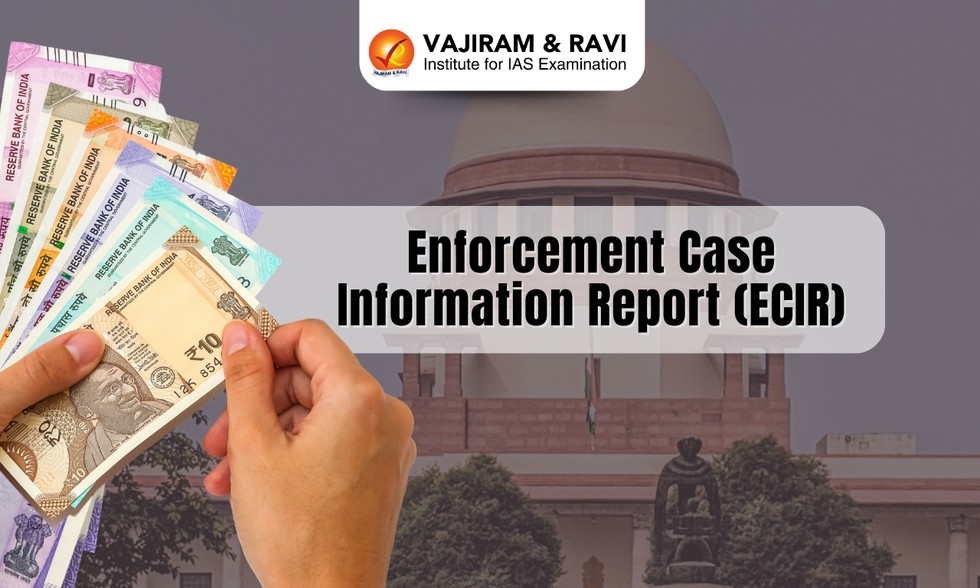
About Enforcement Case Information Report (ECIR):
- The ECIR is a formal entry of the complaint lodged by the Enforcement Directorate (ED).
- Whenever the ED receives information about the commission of an offence of money laundering, it is converted into a formal report known as the ECIR.
- It serves as a starting point for ED’s proceedings, including the attachment of assets and arrests.
- There is no mention of the ECIR in the Prevention of Money Laundering Act, 2002 (PMLA Act), or Rules.
- Since the PMLA does not necessitate the registration of ECIR, it is considered a non-statutory document.
- However, as per the practice of ED, the ECIR is lodged before taking any action under the PMLA Act.
- The ECIR under the PMLA Act is similar to the First Information Report (FIR) lodged by the Police for cognizable offences.
- However, the Supreme Court held that an ECIR cannot be equated with an FIR, which is mandatorily required to be recorded and supplied to the accused.
- As per the ED, ECIR is a document meant for identification of a particular case and for departmental convenience and is purely an internal document.
- ED is not legally bound to provide a copy of the ECIR to the accused.
- Since ECIR lacks statutory status, there is no requirement to quash them.
Key Facts about Enforcement Directorate (ED):
- The Directorate of Enforcement or Enforcement Directorate (ED) is a domestic law enforcement agency and economic intelligence agency.
- It was established in the year 1956 with its Headquarters at New Delhi.
- It is responsible for enforcing economic laws and fighting economic crimes in India.
- It is responsible for inspecting and taking legal action involving economic crimes, money laundering, corruption, and breaches of foreign exchange laws.
- Nodal Ministry: Department of Revenue, Ministry of Finance
- Objectives of the ED: The prime objective of the Enforcement Directorate is the enforcement of three key Acts of the Government of India, namely:
- Foreign Exchange Management Act, 1999 (FEMA),
- Prevention of Money Laundering Act, 2002 (PMLA), and
- Fugitive Economic Offenders Act, 2018 (FEOA).
Current Affairs
July 11, 2025
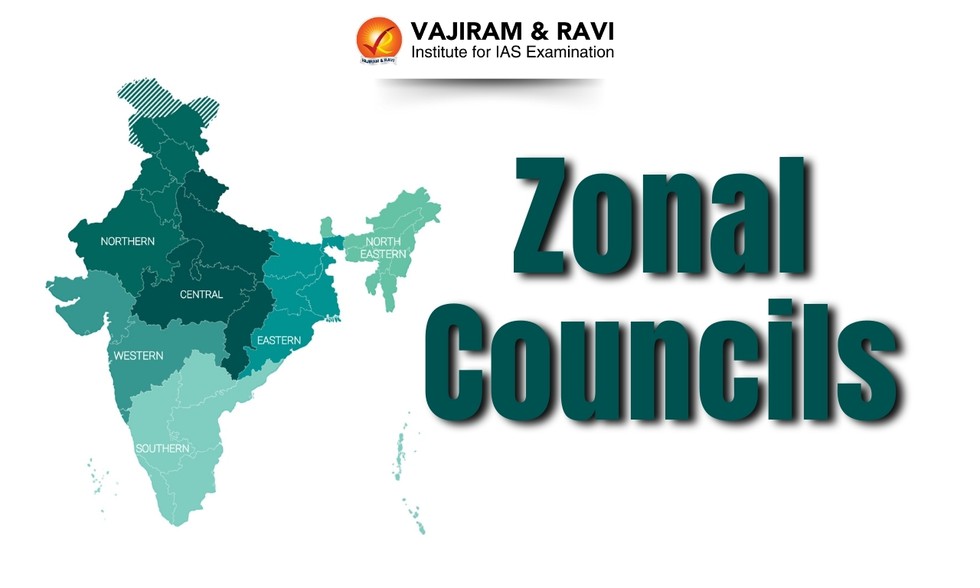
About Zonal Councils:
- The idea of the creation of Zonal Councils was mooted by the first Prime Minister of India, Pandit Jawahar Lal Nehru, in 1956.
- The Zonal Councils are the statutory bodies.
- Five zonal councils were set up in 1957 under Sections 15-22 of the States Reorganisation Act, 1956.
- Objective: To provide a common meeting ground to the states and UTs in each zone for resolution of interstate and regional issues, fostering balanced socio-economic regional development and building harmonious Centre- State relations.
- The present composition of each of these five Zonal Councils is as follows:
- Northern Zonal Council: Haryana, Himachal Pradesh, Jammu & Kashmir, Ladakh, Punjab, Rajasthan, Delhi, and Chandigarh.
- Central Zonal Council: Chhattisgarh, Uttarakhand, Uttar Pradesh, and Madhya Pradesh.
- Eastern Zonal Council: Bihar, Jharkhand, Odisha, and West Bengal.
- Western Zonal Council: Goa, Gujarat, Maharashtra, and Daman & Diu and Dadra & Nagar Haveli.
- Southern Zonal Council: Andhra Pradesh, Telangana, Karnataka, Kerala, Tamil Nadu, and Puducherry.
- North Eastern Council:
- The North Eastern States,e. Assam, Arunachal Pradesh, Manipur, Tripura, Mizoram, Meghalaya, and Nagaland, are not included in the Zonal Councils, and their special problems are looked after by the North Eastern Council, set up under the North Eastern Council Act, 1972.
- The State of Sikkim has also been included in the North Eastern Council vide the North Eastern Council (Amendment) Act, 2002, notified on 23rd December 2002.
- Each Zonal Council is an advisory body and may discuss any matter in which some or all of the States represented in that council, or the Union and one or more of the States represented in that Council, have a common interest and advise the Central Government and the Government of each State concerned as to the action to be taken on any such matter.
- Organisational Structure:
- Chairman: The Union Home Minister is the Chairman of each of these Councils.
- Vice Chairman: The Chief Ministers of the States included in each zone act as vice-chairman of the zonal council for that zone by rotation, each holding office for a period of one year at a time.
- Members: Chief Minister and two other ministers as nominated by the Governor from each of the States and two members from Union Territories included in the zone.
- Each Zonal Council has set up a Standing Committee consisting of Chief Secretaries of the member States of the respective Zonal Councils.
- The Standing Committees meet from time to time to resolve the issues or to do necessary groundwork for further meetings of the Zonal Councils.
- Senior officers from the NITI Aayog (erstwhile Planning Commission), Central Ministries, and State Governments are associated with the meetings depending upon necessity.
Current Affairs
July 11, 2025

About Agricultural Monitoring and Event Detection (AMED) API:
- AMED is an artificial intelligence (AI)-based open-source application programming interface (API) launched by
- It provides field-level crop data, specifically helping in monitoring crops and detecting agricultural events at individual fields across India.
- The AMED API details the type of crop on a given field, crop season, and the field’s size and also provides historical information about the agricultural activity on it for the last three years.
- These insights can help significantly improve agricultural management on farms and also address the specific needs of each crop – including the right soil and water conditions, growth patterns, and climatic needs – as well as predict crops’ harvest volume.
- Google will be sharing the AMED API for agriculture startups to find more innovative solutions to improve the agriculture ecosystem.
- AMED API data is also refreshed nearly every two weeks, enabling the ecosystem partners leveraging AMED API access to continuously updated information that accounts for field-level changes.
- AMED API builds on the Agricultural Landscape Understanding (ALU) Research API that the company launched last year.
- It uses satellite imagery and AI to map field boundaries and land use across India.
Current Affairs
July 11, 2025
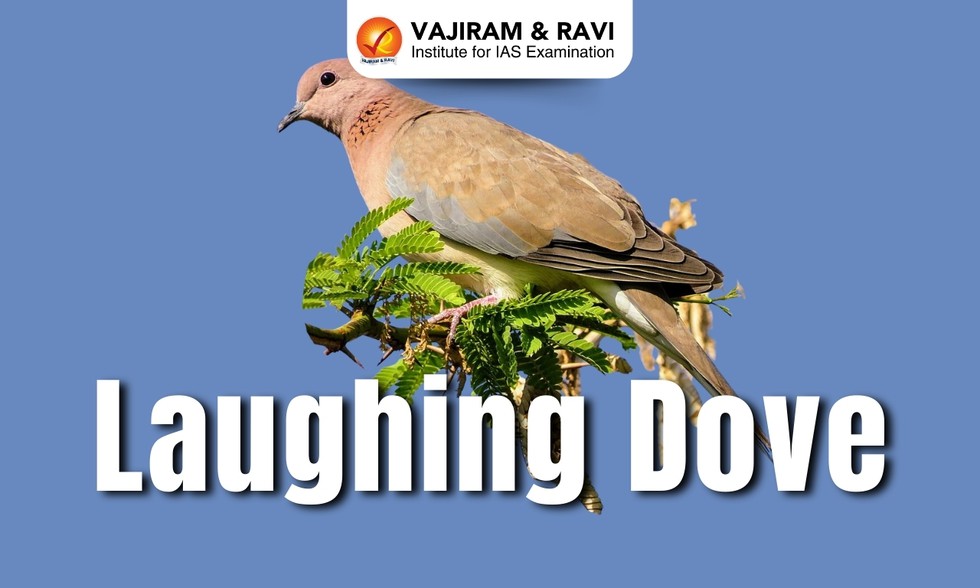
About Laughing Dove:
- It is a small pigeon that is a resident breeder in Africa, the Middle East, and the Indian Subcontinent.
- Scientific Name: Spilopelia senegalensis
- Other names include laughing turtle dove, palm dove, and Senegal dove, while in India the name of little brown dove is often used.
- Distribution:
- The species is found in much of sub-Saharan Africa, Saudi Arabia, Iran, Afghanistan, Pakistan, and India.
- It is also found in Israel, Lebanon, Syria, the UAE, and Turkey (these populations may be derived from human introductions).
- It was also introduced in Western Australia.
- Habitat: It is found in dry scrub and semi-desert habitats where pairs can often be seen feeding on the ground.
- Features:
- It is a long-tailed, slim pigeon, typically 25 cm in length.
- Its back wings and tail are reddish-brown with blue-grey in the wings.
- In flight, the underwings are rich chestnut.
- The head and underparts are pinkish, shading to whitish on the lower abdomen.
- There is black spotting on the throat. The legs are red.
- Juveniles are more rufous than adults, and have reduced throat spotting.
- They are fairly terrestrial, foraging on the ground in grasslands and cultivation.
- They are not particularly gregarious, and are usually alone, or in pairs.
- Conservation Status:
- IUCN Red List: Least Concern.
Current Affairs
July 11, 2025
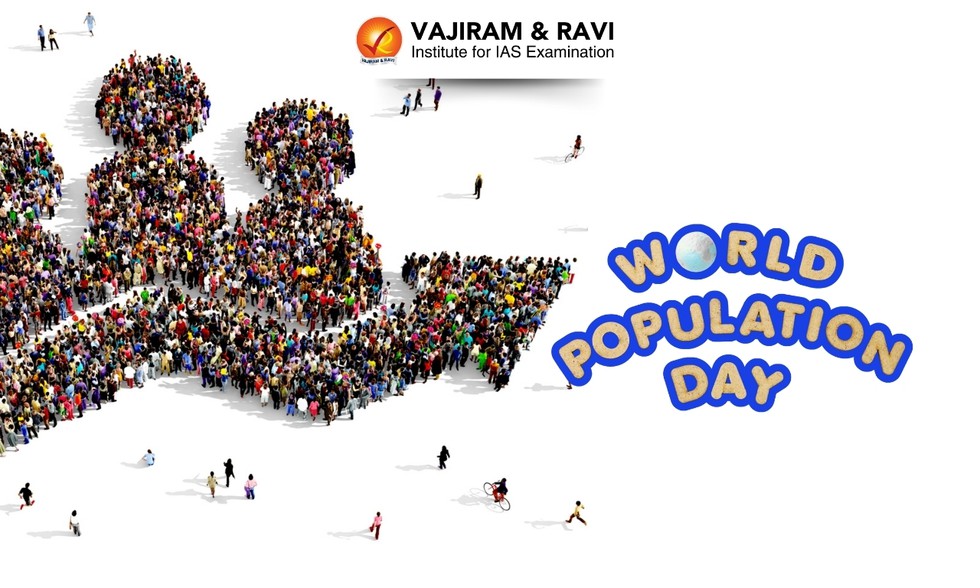
About World Population Day (WPD):
- Observed annually on July 11, World Population Day is a United Nations initiative aimed at raising awareness about the challenges and opportunities of global population growth.
- With the world population now surpassing 8.2 billion, the day highlights the importance of sustainable development, equitable access to resources, reproductive rights, and gender equality.
- World Population Day 2025 Theme: ‘Empowering young people to create the families they want in a fair and hopeful world’.
- History:
- WPD was established by the then-Governing Council of the United Nations Development Programme (UNDP) in 1989, following the global interest generated by "Five Billion Day" on 11 July 1987, when the world's population reached 5 billion.
- Dr KC Zachariah, a senior demographer at the World Bank, suggested that this day be commemorated.
- In December 1990, the UN General Assembly decided to keep celebrating WPD annually to promote understanding of population issues and how they connect to the environment and development.
- The first WPD was celebrated on July 11, 1990, in over 90 countries.
Key Facts on World's Population:
- The world's population has increased by over three times since the middle of the 20th century.
- According to the UN, there were 2 billion people on the planet as of July 2025.
- The population is predicted to peak at 10.4 billion in the middle of the 2080s, having reached7 billion in 2050.
- India leads globally with 1.46 billion people, followed by China's 1.41 billion.
- India’s total fertility rate has fallen below the replacement level.
- India’s population is expected to grow to approximately7 billion before beginning to decline around 40 years from now, as stated in the UN Population Fund’s (UNFPA) 2025 State of World Population Report.
Current Affairs
July 11, 2025
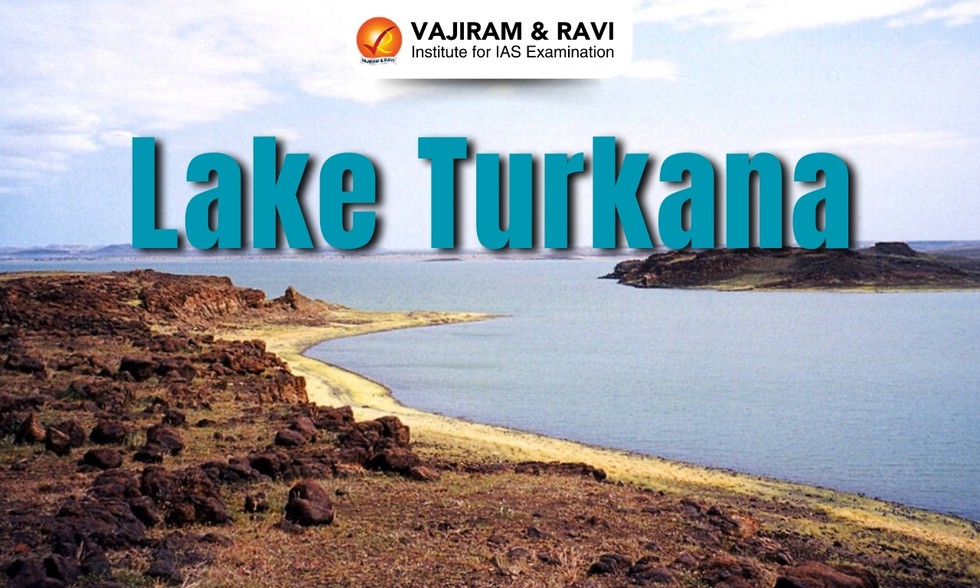
About Lake Turkana:
- Location: It is located in the remote northern region of Kenya.
- It lies in the Eastern Rift Valley with its far northern end extending to Ethiopia.
- Three rivers, including Omo, Turkwel, and Kerio flow into the lake, but only the Omo River is perennial, contributing 90 percent of the inflow of water each year.
- It stands as Africa’s fourth-largest lake and the largest permanent desert lake in the world.
- It is designated as the UNESCO World Heritage site and is renowned for its unique biodiversity and cultural significance.
- It is lying in a hot, arid, and remote region, and provides resources for communities on the lakeshore and surrounding areas.
- The estimated population of the Turkana region is approximately 1 million people, whose livelihoods are based on pastoralism, fishing, and, to a lesser extent, crop farming.
- Issues: Its semi-saline waters, driven by high evaporation rates and fluctuating lake levels of up to 8 meters per decade, have historically hindered sustainable development initiatives.
- Several past attempts to commercialize the fishery have largely failed, mainly due to a lack of understanding of the volatile conditions of this capricious lake.
Current Affairs
July 11, 2025

About Medium Altitude Long Endurance Drone:
- MALE drones are Unmanned Aerial Vehicles that have the capability to fly over 30 hours at a maximum altitude of at least 35,000 feet.
- These drones are equipped with advanced surveillance and combat capabilities: including real-time intelligence, surveillance, and reconnaissance (ISR) in all kinds of terrain.
- These will enhance surveillance along its sea and land borders.
- Purpose of Medium Altitude Long Endurance Drones: Primarily used for surveillance, reconnaissance, and strike missions.
- Strategic Importance: These drones will enhance the surveillance capabilities of all three services, especially the Indian Air Force to monitor the Eastern and Western Border
- The procurement of 87 drones is aimed at bolstering real-time monitoring and operational readiness across critical areas.
- The 87-drone MALE project serves two parallel aims: fill the medium-altitude tier between smaller tactical UAVs and the high-altitude Guardians, and indigenise a capability so far dominated by Israeli imports.

